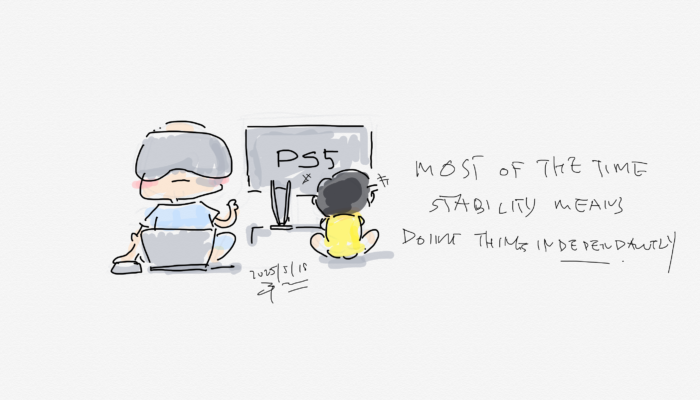
5-18 #Stability : Xiaomi will launch a new self-developed advanced mobile chip, XRing 01; Apple allegedly adopts a bi-annual iPhone release schedule; Harman International has entered a definitive agreement to acquire Masimo’s consumer audio division; etc.

MediaTek has announced the Dimensity 9400e, a new chipset in the company’s flagship Dimensity family. The 9400e sits below the 9400 and the 9400+ models, and is essentially a rebranded 9300+ from 2024 with minor changes. The Dimensity 9400e has the company’s All Big Core design, which includes 1x 3.4GHz Cortex-X4, 3x 2.85GHz Cortex-X4, and 4x 2.0GHz Cortex-A720 CPU cores, same as the 9300+. There’s also 8MB L3 cache and 10MB SLC. The chip supports up to 8533MHz LPDDR5X memory, which is a drop from the 9600MHz supported by the 9300+. There’s also UFS 4 + MCQ storage support. The 9400e also uses the same 12-core Immortalis-G720 MC12 GPU as the 9300+ with hardware accelerated ray-tracing support. (Android Headlines, GSM Arena, MediaTek)
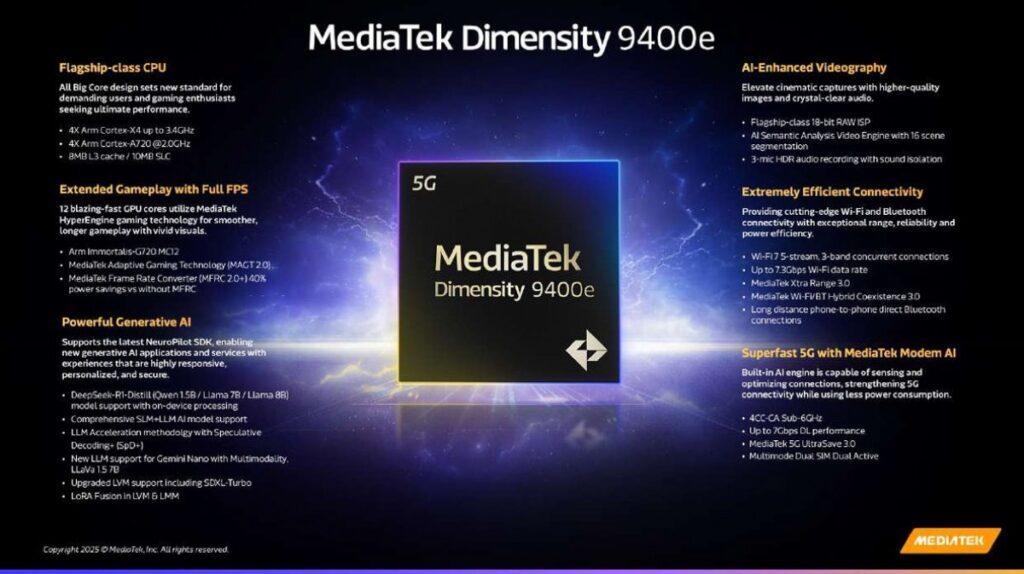
Apple is reportedly set to order USD60B worth of chips from TSMC in 2025, a 44% increase that could significantly boost TSMC’s revenue and tighten Apple’s grip on cutting-edge chip supply. The jump in 3-nanometer orders is primarily due to Apple’s orders as the firm often uses TSMC’s latest chip manufacturing technologies for processors used in its smartphones. The 2nm orders from Apple could touch NTD1T (about USD33B) in 2025. TSMC earned USD90B in revenue in 2024. Whether a high end is achievable depends on the speed at which TSMC’s Arizona plants picks up production and the production ramp up of the 2nm process technology. TSMC’s 2nm manufacturing process is the most advanced in the world. It uses newer nanosheet transistors over the previous technologies’ FinFET designs. (Android Headlines, WCCFTech, UDN)
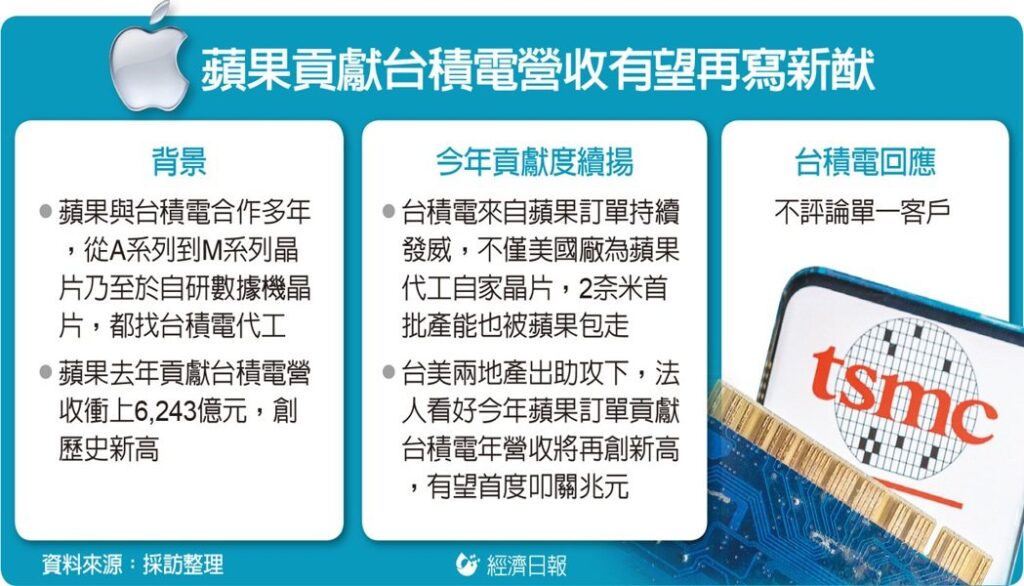
Apple is allegedly developing specialized processors for smart glasses, more powerful Mac computers, and dedicated AI servers. The silicon design group at Apple has made significant progress on a processor for smart glasses. The new chip, based on Apple Watch processors but further optimized for power efficiency, will control multiple cameras planned for the device. Mass production of the glasses processor is targeted for late 2026 or 2027, according to Bloomberg’s Mark Gurman. The project is code-named N401 (previously N50). The company is simultaneously developing AI-enhancing components for other wearables, including camera-equipped AirPods and Apple Watches. Apple’s first dedicated AI server chips are also in development under the “Baltra” project, with completion expected by 2027. These processors would significantly enhance Apple Intelligence services by potentially incorporating up to 8 times the processing and graphics cores of current M3 Ultra chips. Additional Mac processors in development include the M6 (code-named “Komodo”), M7 (“Borneo”), and a more advanced chip dubbed “Sotra.” The M5 processor could arrive in iPad Pro and MacBook Pro models as early as late 2025. (Apple Insider, Bloomberg, MSN)
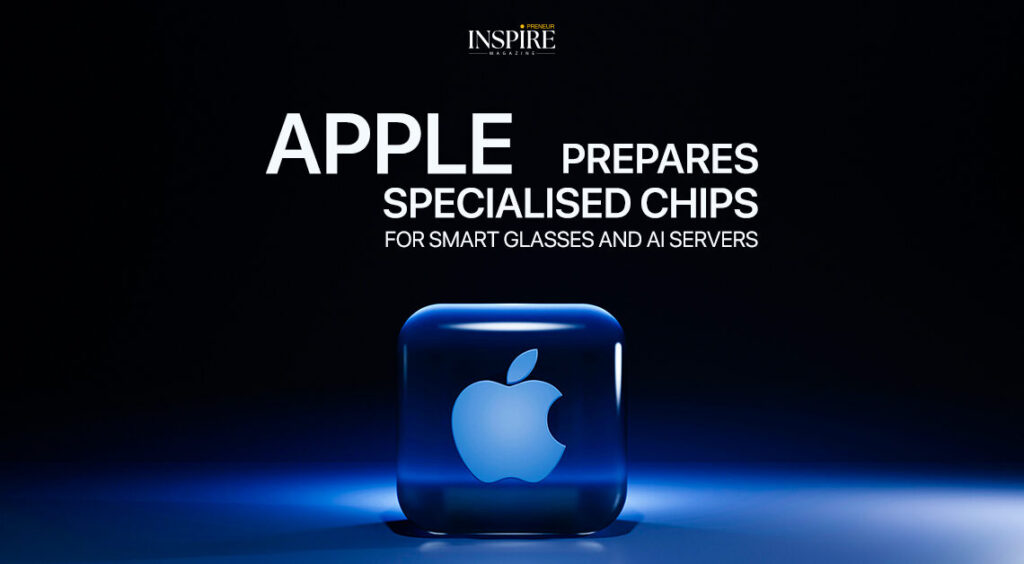
Xiaomi’s CEO Lei Jun has announced that the company will launch a new self-developed advanced mobile chip, XRing 01, in late May 2025. The XringO1 mobile chip was developed by Xiaomi’s internal chip design unit using ARM’s architecture and manufactured by TSMC using its advanced 3nm node. designing its own chips in 2014 and launched its first mobile processor, the 28-nm Pengpai S1, in 2017, which debuted in the Xiaomi 5C smartphone. However, by 2019, the company had shifted focus to less complex chips such as image sensors and power management ICs, as mobile processor development stalled due to high costs. But the company resumed mobile chip development in 2021. Rumor has it that the Xiaomi 15S Pro will be the first to feature XRing 01. (Android Headlines, WCCFTech, CN Beta, Android Central, Reuters, My Drivers)
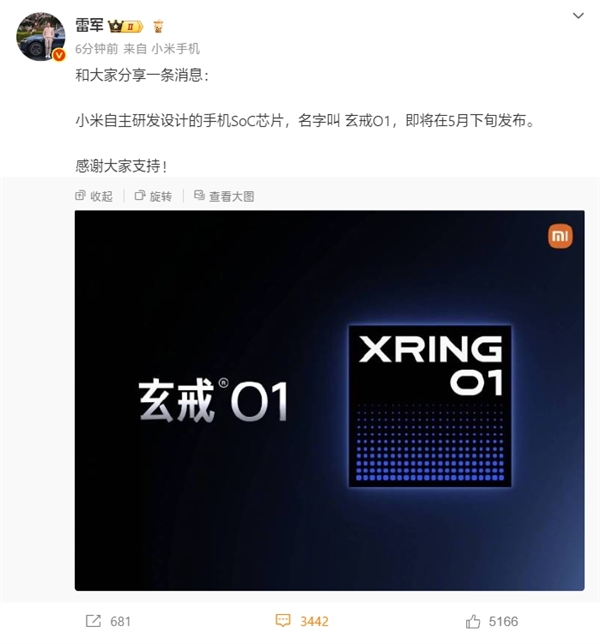

Samsung has announced that the upcoming Galaxy S25 Edge will feature Corning Gorilla Glass Ceramic 2, which is a new glass ceramic offering that delivers advanced protection in a new, remarkably thin device form factor. Gorilla Glass Ceramic 2 features crystals intricately embedded within its glass matrix, enhancing the durability and crack deflection capabilities of the display cover. The synergy between the glass and crystal components is engineered to provide improved toughness while retaining high optical transparency. As a key component in enhancing damage-resistance, Corning’s ion exchange process further fortifies the glass ceramic material and improves retained strength of the display cover. (Android Authority, Samsung)
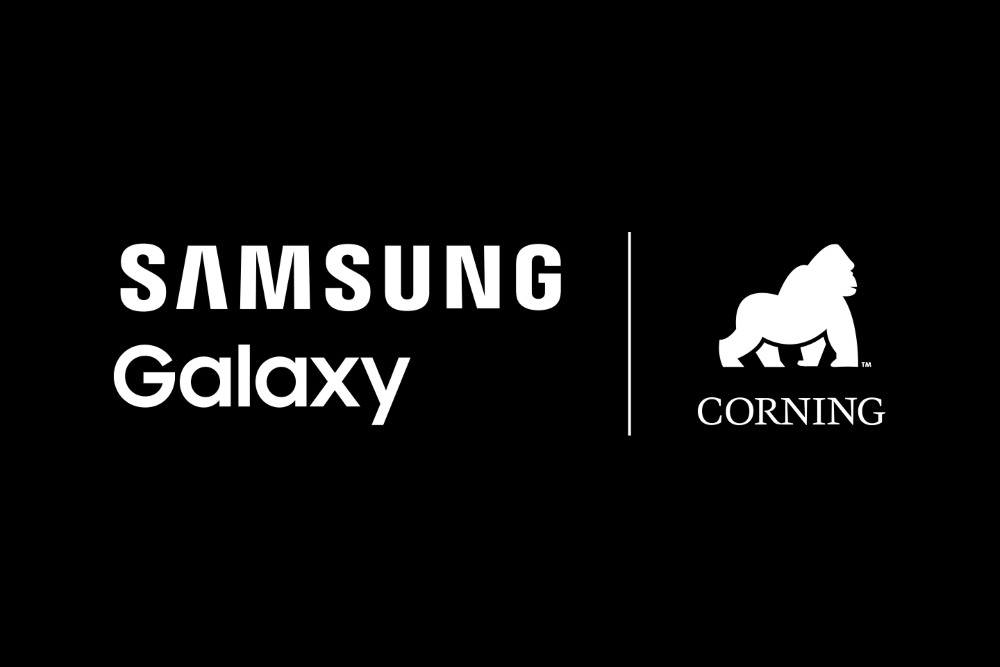
Bloomberg’s Mark Gurman has indicated that Apple’s foldable iPhone will have two key advantages over the competition Samsung. Firstly, the foldable iPhone will sport a crease that is “nearly invisible”. That would make the internal display more seamless and give the user an uninterrupted viewing experience. Secondly, the hinge is going to be “much higher-quality”. (Bloomberg, Android Headlines)

Apple’s upcoming foldable iPhone will allegedly have a hole-punch camera on the outer display. The inner display on the book-style foldable is a 14.1:1 panel featuring an under-display camera, while the outer screen is a 14.6:1 panel with a hole-punch camera. A Touch ID sensor is included on the side of the device. Expected to launch in 2026, Apple’s book-style foldable is rumoured to feature a 7.8” crease-free internal display and a 5.5” external display. (Android Headlines, MacRumors, Weibo)


According to former Display Supply Chain CEO, current VP of Counterpoint Research, Ross Young, Apple is set to put Face ID components under the display with iPhone 18 Pro in 2026. Apple will need to ensure Face ID remains as secure and functional as it is when it is exposed on the display. The company likely will not implement the under-display system if it sacrifices security or convenience. (Twitter, Apple Insider)


Samsung’s One UI Watch 8 could introduce a battery protection feature that limits charging to a certain percentage. Currently, Galaxy Watches will stop charging once the battery is full and trickle charge as necessary. This is similar to Pixel Watch’s upcoming Adaptive Charging or the Apple Watch’s existing Optimized Charging Limit. An APK teardown helps predict features that may arrive on a service in the future based on work-in-progress code. However, it is possible that such predicted features may not make it to a public release. According to the code string for the Battery app (version 4.0.00.8), this feature will stop charging once it reaches a certain percentage and start charging when it drops below a specified threshold. (Android Authority)


Samsung has made AI a major selling point of the Galaxy S25 series. The company’s Galaxy AI suite is powerful and it’s also aided by Google’s Gemini, which adds another dimension of artificial intelligence to the company’s latest flagship series. Gen Z is a key target market for the company, and it has launched a new campaign aimed at showing off how the Galaxy S25’s AI features can help them in real life. The campaign has been developed by BBH Singapore, primarily targeting Gen Z users, a demographic that is increasingly using AI to assist in their daily tasks. The three short videos show how the Galaxy S25 series can help with everyday tasks like cooking errors, laundry troubles, and even preparing for exams, with conversational help from Gemini Live. Recent research has shown that more than 40% of Gen Z users in the United States rely on AI to help with their everyday tasks. These videos will further drive the point home that the Galaxy S25 is the device to have for the most powerful AI experience on mobile. (SamMobile, Android Headlines)

TF Securities analyst Ming-Chi Kuo has published what he believes is the new release schedule, including news of the slim and folding models of Apple. His full schedule list reads: 2H25 with iPhone 17 Pro, iPhone 17 Pro Max, iPhone 17 Slim, iPhone 17; 1H26 with iPhone 17e; 2H26 with iPhone fold, iPhone 18 Pro, iPhone 18 Pro Max, iPhone 18 Slim; 1H27 with iPhone 18, iPhone 18e; and 2H27 with iPhone fold 2, iPhone 19 Pro, iPhone 19 Pro Max, iPhone 19 Slim. The primary reason Apple adopts a bi-annual iPhone release schedule, with launches in 1H and 2H, is intense competition, particularly in China, prompting a shift in its marketing strategy. Competitors typically release new models in 1H. By launching new iPhones in 1H, Apple could close the marketing gap. Due to intense competition, Apple needs to offer more iPhone models. Launching them all in 2H risks diluting marketing efforts. For instance, the growing shipment ratio of the Pro series is overshadowing budget models. (Apple Insider, Twitter, Medium)
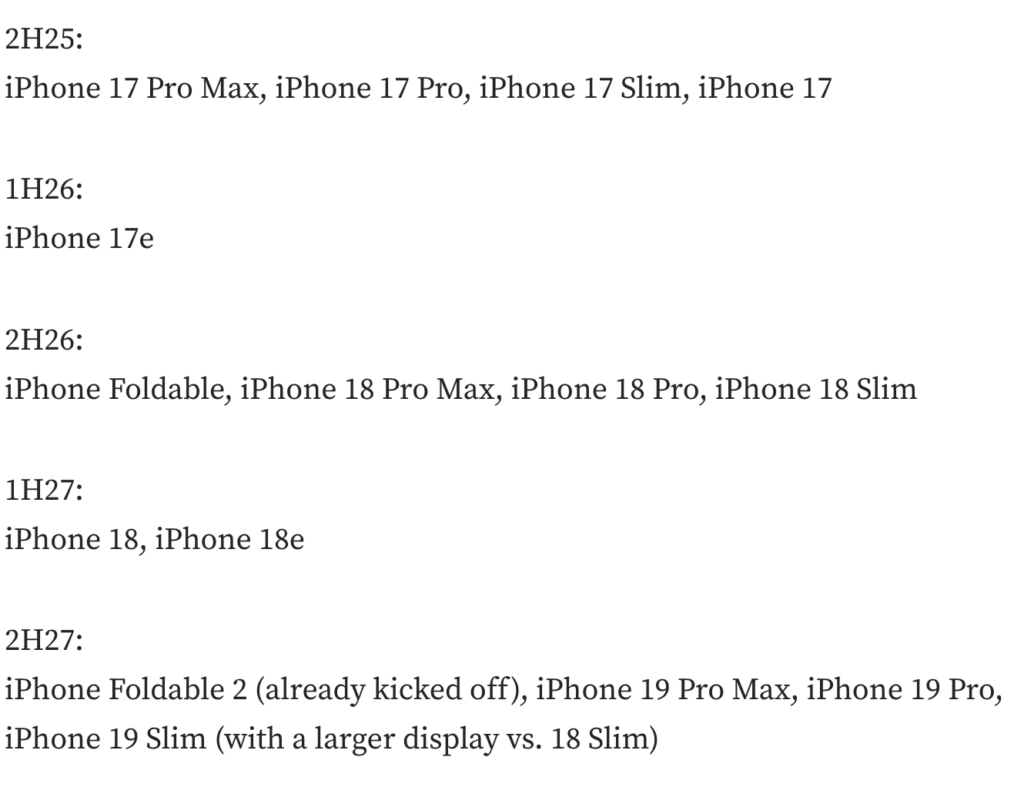
Foxconn has received approval from the Indian government to build a semiconductor plant in a joint venture with HCL Group, drawing an investment of INR37.06B (USD433M). The plant, which will be built in India’s northern state of Uttar Pradesh, will be operational by 2027, according to Ashwini Vaishnaw, India’s information minister. The deal comes as Apple suppliers including Foxconn are increasingly turning to India in a shift away from China, amid persistent trade tensions between Beijing and Washington. Vaishnaw said the facility will manufacture Foxconn’s display driver chips, which are used in mobile phones, laptops, automobiles, PCs, and other consumer electronics. (Apple Insider, CNBC)

Samsung is reportedly planning to add an Edge mode, which is a slim model, to its Galaxy S26 smartphone series. The Edge model is most likely to replace the Plus model. Out of the standard, Plus, and Ultra models available in the Galaxy S series, the Plus model has always sold the fewest number of units. Samsung has recently started the development project for Galaxy S26. The project name is NPA; the project name for Galaxy S25 series was PA as in Paradigm. NPA is starting with standard, Edge, and Ultra models in mind but may change Edge back to Plus if Galaxy S25 Edge does not perform well. (Android Central, The Elec)
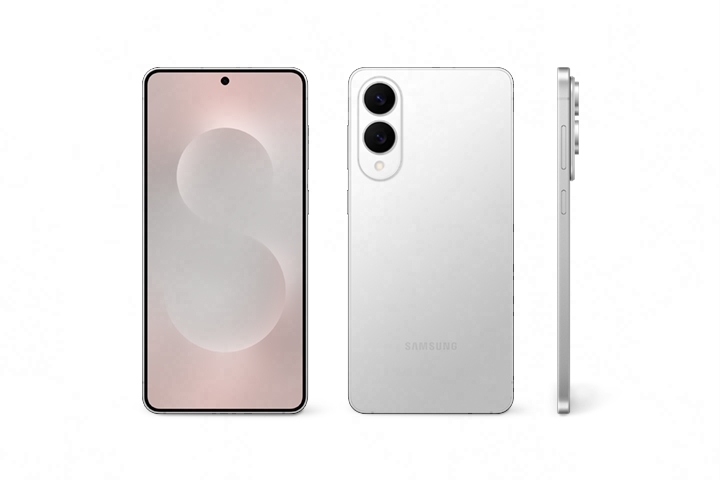

Samsung has announced that it will soon bring full Google Gemini integration to its Galaxy Watches and Buds. Not only will Gemini further “extend AI functionalities” across its accessories, but each device will pick up a little uniqueness. Samsung states its Galaxy Watch integration gains “hands-free assistance using natural voice commands”. Users with a Galaxy Watch can ask Gemini for to remember things or to summarize emails while Galaxy Buds users can use a few hands-free options. Samsung says these updates will rollout “in the coming months”. (Android Central, Samsung)


Harman International has entered a definitive agreement to acquire Masimo’s consumer audio division by the end of 2025. The agreed USD350M cash sale, subject to certain adjustments, will see the Samsung-owned company take in legendary hi-fi brands Bowers & Wilkins, Denon and Marantz, as well as Polk Audio, Definitive Technology, Classé, HEOS and Boston Acoustics, expanding its extensive AV catalogue. Harman, which has been owned by Samsung Electronics since 2016, already owns significant AV brands such as Arcam, AKG, JBL, Mark Levinson and Revel. Samsung says it plans to add Masimo’s brands to strengthen its global leading position in the consumer audio market, which is expected to grow from USD60.8B in 2025 to USD70B in 2029. (Android Headlines, SamMobile, CN Beta, What HiFi, Business Wire, Samsung)


Apple has introduced CarPlay Ultra, an in-car system built into vehicles that offers full integration across driver displays and access to both iPhone content and vehicle controls. Users can manage climate controls, navigation, media playback, vehicle settings, and even check systems like tire pressure, via touchscreen input, buttons, and even Siri. The rollout starts with Aston Martin vehicles in the US and Canada. (Android Authority, Apple Insider, Apple)
